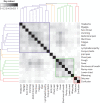Clinical characteristics of children and young people admitted to hospital with covid-19 in United Kingdom: prospective multicentre observational cohort study
- PMID: 32960186
- PMCID: PMC7488201
- DOI: 10.1136/bmj.m3249
Clinical characteristics of children and young people admitted to hospital with covid-19 in United Kingdom: prospective multicentre observational cohort study
Abstract
Objective: To characterise the clinical features of children and young people admitted to hospital with laboratory confirmed severe acute respiratory syndrome coronavirus 2 (SARS-CoV-2) infection in the UK and explore factors associated with admission to critical care, mortality, and development of multisystem inflammatory syndrome in children and adolescents temporarily related to coronavirus disease 2019 (covid-19) (MIS-C).
Design: Prospective observational cohort study with rapid data gathering and near real time analysis.
Setting: 260 hospitals in England, Wales, and Scotland between 17 January and 3 July 2020, with a minimum follow-up time of two weeks (to 17 July 2020).
Participants: 651 children and young people aged less than 19 years admitted to 138 hospitals and enrolled into the International Severe Acute Respiratory and emergency Infections Consortium (ISARIC) WHO Clinical Characterisation Protocol UK study with laboratory confirmed SARS-CoV-2.
Main outcome measures: Admission to critical care (high dependency or intensive care), in-hospital mortality, or meeting the WHO preliminary case definition for MIS-C.
Results: Median age was 4.6 (interquartile range 0.3-13.7) years, 35% (225/651) were under 12 months old, and 56% (367/650) were male. 57% (330/576) were white, 12% (67/576) South Asian, and 10% (56/576) black. 42% (276/651) had at least one recorded comorbidity. A systemic mucocutaneous-enteric cluster of symptoms was identified, which encompassed the symptoms for the WHO MIS-C criteria. 18% (116/632) of children were admitted to critical care. On multivariable analysis, this was associated with age under 1 month (odds ratio 3.21, 95% confidence interval 1.36 to 7.66; P=0.008), age 10-14 years (3.23, 1.55 to 6.99; P=0.002), and black ethnicity (2.82, 1.41 to 5.57; P=0.003). Six (1%) of 627 patients died in hospital, all of whom had profound comorbidity. 11% (52/456) met the WHO MIS-C criteria, with the first patient developing symptoms in mid-March. Children meeting MIS-C criteria were older (median age 10.7 (8.3-14.1) v 1.6 (0.2-12.9) years; P<0.001) and more likely to be of non-white ethnicity (64% (29/45) v 42% (148/355); P=0.004). Children with MIS-C were five times more likely to be admitted to critical care (73% (38/52) v 15% (62/404); P<0.001). In addition to the WHO criteria, children with MIS-C were more likely to present with fatigue (51% (24/47) v 28% (86/302); P=0.004), headache (34% (16/47) v 10% (26/263); P<0.001), myalgia (34% (15/44) v 8% (21/270); P<0.001), sore throat (30% (14/47) v (12% (34/284); P=0.003), and lymphadenopathy (20% (9/46) v 3% (10/318); P<0.001) and to have a platelet count of less than 150 × 109/L (32% (16/50) v 11% (38/348); P<0.001) than children who did not have MIS-C. No deaths occurred in the MIS-C group.
Conclusions: Children and young people have less severe acute covid-19 than adults. A systemic mucocutaneous-enteric symptom cluster was also identified in acute cases that shares features with MIS-C. This study provides additional evidence for refining the WHO MIS-C preliminary case definition. Children meeting the MIS-C criteria have different demographic and clinical features depending on whether they have acute SARS-CoV-2 infection (polymerase chain reaction positive) or are post-acute (antibody positive).
Study registration: ISRCTN66726260.
© Author(s) (or their employer(s)) 2019. Re-use permitted under CC BY. No commercial re-use. See rights and permissions. Published by BMJ.
Conflict of interest statement
Competing interests: All authors have completed the ICMJE uniform disclosure form at www.icmje.org/coi_disclosure.pdf and declare: support from the National Institute for Health Research and the Medical Research Council; JSN-V-T received grants from the Department of Health and Social Care, England, during the conduct of the study; PWH received grants from the Wellcome Trust, Department for International Development, and Bill and Melinda Gates Foundation and from NIHR during the conduct of the study; PJMO received personal fees from consultancy and grants from MRC, grants from EU Grant, grants from NIHR Biomedical Research Centre, grants from MRC/GSK, grants from Wellcome Trust, grants from NIHR (HPRU), grants from NIHR Senior Investigator, personal fees from European Respiratory Society, and grants from MRC Global Challenge Research Fund, outside the submitted work, and although the role of president of the British Society for Immunology was an unpaid appointment, travel and accommodation at some meetings is provided by the society; AMD received grants from Department of Health and Social Care, during the conduct of the study, and grants from Wellcome Trust outside the submitted work; JKB received grants from DHSC National Institute of Health Research UK, Medical Research Council UK, Wellcome Trust, Fiona Elizabeth Agnew Trust, Intensive Care Society, and Chief Scientist Office, during the conduct of the study; MGS received grants from DHSC National Institute of Health Research UK, Medical Research Council UK, and Health Protection Research Unit in Emerging and Zoonotic Infections, University of Liverpool, during the conduct of the study, and from Integrum Scientific LLC, Greensboro, NC, USA, outside the submitted work; no other relationships or activities that could appear to have influenced the submitted work.
Figures



References
-
- European Centre for Disease Prevention and Control. Rapid risk assessment: Paediatric inflammatory multisystem syndrome and SARS -CoV-2 infection in children. 2020. https://www.ecdc.europa.eu/en/publications-data/paediatric-inflammatory-....
-
- Viner RM, Mytton OT, Bonell C, et al. Susceptibility to and transmission of COVID-19 amongst children and adolescents compared with adults: a systematic review and meta-analysis. medRxiv. 2020. https://www.medrxiv.org/content/10.1101/2020.05.20.20108126v1. - DOI
Publication types
MeSH terms
Supplementary concepts
Associated data
Grants and funding
LinkOut - more resources
Full Text Sources
Miscellaneous
